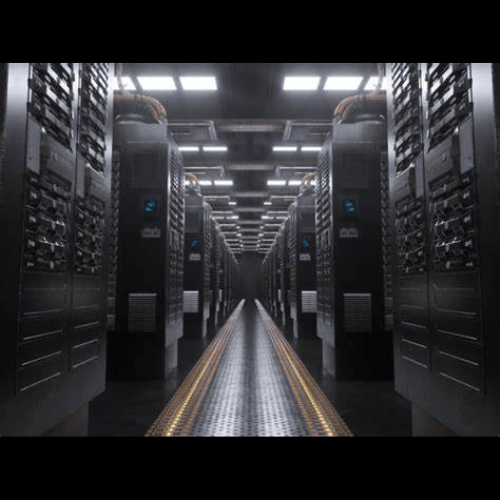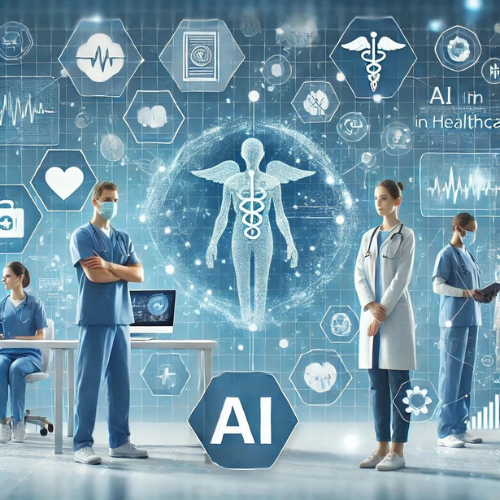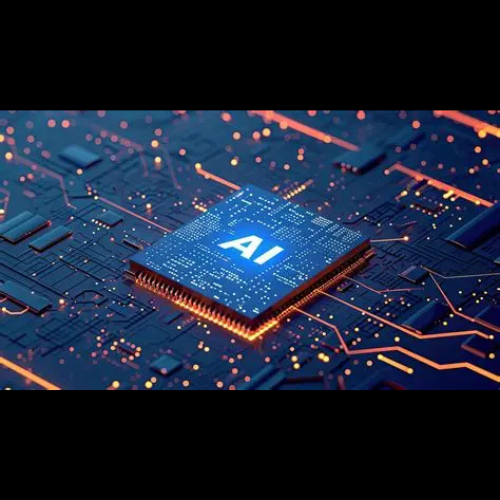The rise of artificial intelligence (AI) is transforming our world, powering innovations from self-driving cars to advanced medical diagnostics. At the heart of this revolution are data centers, the sprawling facilities that process, store, and distribute the massive amounts of data AI requires. But as demand for AI grows, the tech industry faces a critical challenge: how to build and run these data centers efficiently and sustainably.
This is especially true for hyperscalers—big players like Amazon Web Services, Google Cloud, and Microsoft Azure—who operate enormous data centers capable of scaling up rapidly to meet demand. These companies are grappling with major obstacles, from skyrocketing energy consumption to finding the right locations and designs for their facilities. Let’s dive into why AI data centers are so important, what makes them unique, and the challenges and innovations shaping their future.
Why AI Needs Specialized Data Centers
AI isn’t just another application running on the cloud. It requires immense computing power to train complex models and process data at lightning speeds. For example, training a large language model like ChatGPT involves processing billions of pieces of data over weeks or months. This demands hardware that’s far more powerful than what most traditional data centers are equipped to handle.
AI-centric data centers rely on specialized processors such as GPUs (Graphics Processing Units) and TPUs (Tensor Processing Units). These chips are designed to handle the parallel processing tasks that AI requires, like crunching millions of calculations simultaneously. But this hardware comes with unique demands: it generates more heat, consumes more energy, and requires cutting-edge infrastructure to run efficiently.
The Energy Dilemma: AI’s Growing Appetite
AI’s thirst for computational power has a price: energy consumption. Data centers already account for a significant chunk of global electricity use, and the rapid growth of AI is only adding to the strain. A recent report backed by the U.S. Department of Energy estimates that data center energy consumption in the U.S. could nearly triple by 2028, potentially consuming up to 12% of the nation’s electricity.
This raises serious sustainability concerns. Powering AI with fossil fuels could significantly increase carbon emissions, undermining efforts to combat climate change. Hyperscalers are acutely aware of this challenge and are investing heavily in renewable energy. For example, companies like Microsoft have committed to running entirely on renewable energy by 2025, while startups like Oklo are exploring nuclear power as a clean, reliable energy source for AI data centers.
However, there’s no silver bullet. Solar and wind power depend on weather conditions, and nuclear energy faces regulatory and public perception challenges. Balancing energy needs with sustainability goals remains one of the biggest hurdles for hyperscalers.
Building Smarter Data Centers: Design and Cooling
Designing an AI data center isn’t just about packing in more servers; it’s about rethinking how facilities operate to handle AI’s unique demands. One of the biggest challenges is managing heat. AI workloads generate significant amounts of it, and traditional air-cooling systems struggle to keep up. As a result, many data centers are adopting liquid cooling systems, which circulate coolant directly around the hardware to efficiently remove heat.
Scalability is another key factor. AI applications are evolving rapidly, and data centers need to grow with them. This means designing modular facilities that can expand quickly without disrupting operations. Companies are also exploring edge computing—placing smaller data centers closer to users—to reduce latency and handle real-time AI applications, such as autonomous vehicles or streaming services.
Choosing the Right Location
Where you build a data center matters more than you might think. Hyperscalers need to balance multiple factors when selecting a site, including access to renewable energy, proximity to users, and climate conditions. Cooler climates are especially attractive because they reduce the need for artificial cooling, cutting energy costs.
However, finding the perfect spot isn’t always straightforward. Some areas with abundant renewable energy may lack the infrastructure to support a data center, or local regulations may make it difficult to proceed. In other cases, hyperscalers must weigh the trade-offs between building near renewable energy sources versus closer to urban areas to minimize latency for users.
Operational Challenges: Efficiency and Metrics
Even after a data center is up and running, keeping it efficient and sustainable is a complex task. Hyperscalers often use a metric called Power Usage Effectiveness (PUE) to measure energy efficiency. A PUE of 1.0 means every watt of energy goes directly to computing, while higher values indicate more energy is wasted on cooling or other overhead.
While PUE is a useful benchmark, it doesn’t capture the full picture. For example, two data centers might have the same PUE, but one could be running on renewable energy while the other relies on coal. This has led to calls for more holistic metrics that account for carbon emissions and the environmental impact of energy use.
Innovations Lighting the Way Forward
Despite these challenges, there are promising innovations on the horizon. One approach involves using AI itself to optimize energy use in data centers. Advanced algorithms can predict energy demand, adjust cooling systems, and even shift workloads to times or locations where renewable energy is most available.
Other strategies include:
Spatio-Temporal Load Shifting: Moving computational tasks between data centers based on energy availability and carbon intensity.
Modular Data Centers: Building smaller, scalable units that can be deployed quickly and placed near renewable energy sources.
Liquid Cooling: This not only improves energy efficiency but also opens the door to more compact designs, potentially lowering costs and environmental impact.
The Road Ahead
The need for AI-specific data centers is clear, but the road to building and running them sustainably is full of challenges.
Hyperscalers must navigate a delicate balancing act, meeting the exploding demand for AI while minimizing their environmental footprint and staying cost-competitive.
The stakes couldn’t be higher. AI has the potential to solve some of humanity’s biggest challenges, from developing new medicines to combating climate change. But to unlock this potential, the infrastructure powering AI must be just as innovative and forward-thinking as the technology itself. By embracing cleaner energy, smarter designs, and cutting-edge innovations, the tech industry can rise to the challenge and build a future where AI benefits everyone—without costing the planet.
by Steve Macalbry
Senior Editor,
BestGrowthStocks.Com
Disclaimer: The author of this article is not a licensed financial advisor. This article is intended for informational purposes only. It should not be considered financial or investment advice. We have not been compensated for the creation or distribution of this article and we do not hold any form of equity in the securities mentioned in this article. Always consult with a certified financial professional before making any financial decisions. Growth stocks carry a high degree of risk, and you could lose your entire investment.






